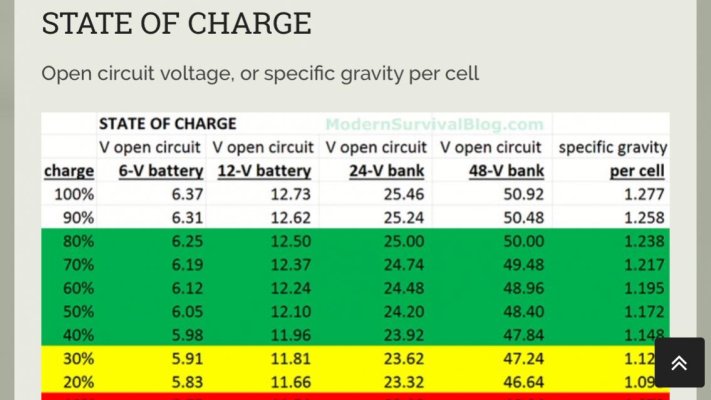Codger2
Guru
- Joined
- Oct 11, 2007
- Messages
- 6,691
- Location
- US
- Vessel Name
- Circuit Breaker
- Vessel Make
- 2021..22' Duffy Cuddy cabin
Kevin, I find the above statement interesting, especially coming from you! The below table was copied from an SAE site.ksanders;817644 On my FLA 820 amp hour bank[B said:I am currently seeing 11.7 volts at 50% discharge.[/B] That is acceptable to me, but when it goes down much it will be time to replace the bank.
Attachments
Last edited:



